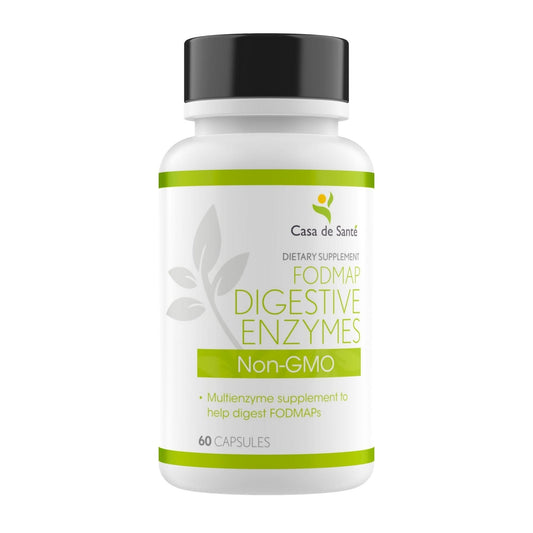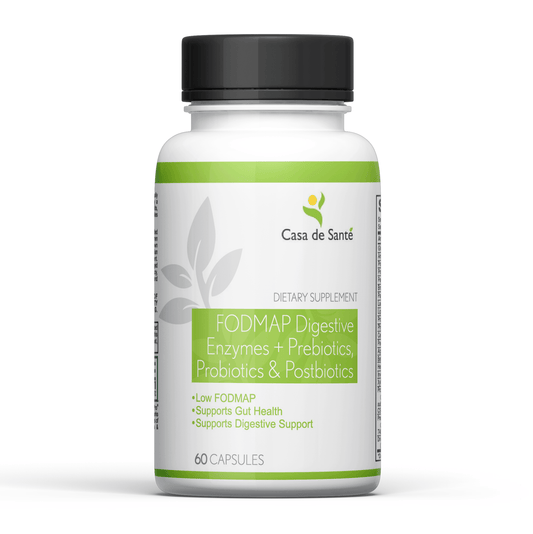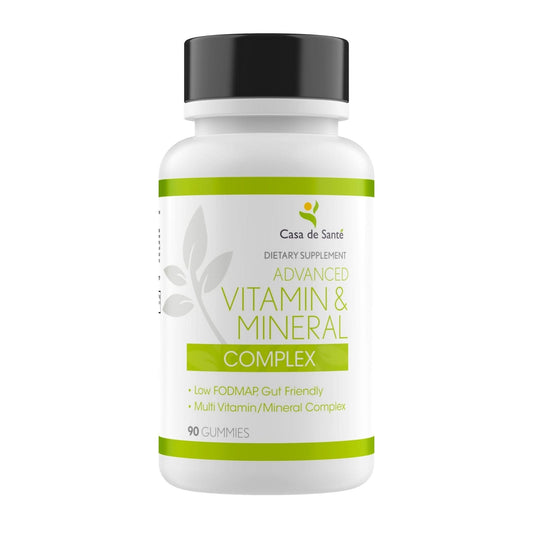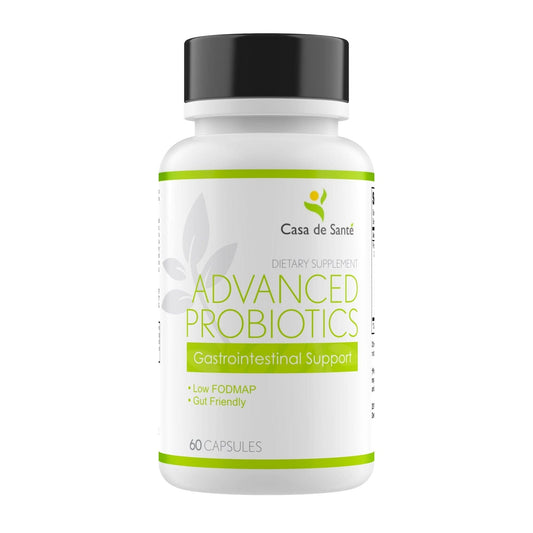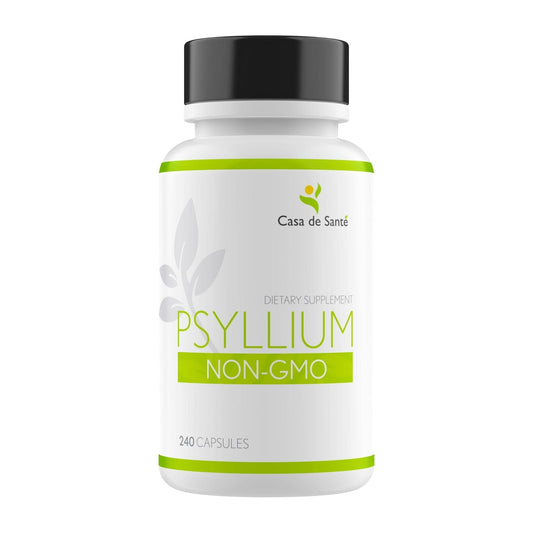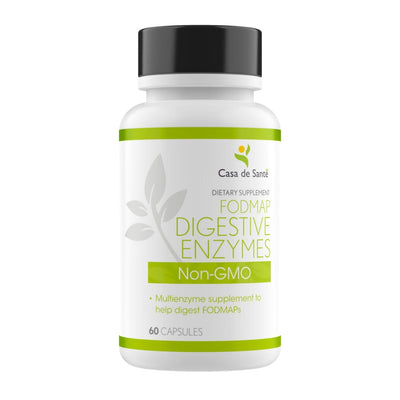FODMAP A to Z: Your Comprehensive Guide to Understanding and Managing FODMAPs
Understanding FODMAPs: The Basics
What Are FODMAPs?
FODMAPs stand for Fermentable Oligosaccharides, Disaccharides, Monosaccharides, and Polyols. These are short-chain carbohydrates that are not fully absorbed in the small intestine. When they reach the large intestine, they are fermented by bacteria, leading to symptoms like bloating and gas. For some, these can be quite uncomfortable, especially for those with irritable bowel syndrome (IBS). Understanding these compounds can be the first step in managing digestive health.
The Science Behind FODMAPs
The science of FODMAPs is fascinating. These carbs, due to their small size and poor absorption, draw water into the intestine and are fermented by gut bacteria. This process can lead to the production of gases, causing discomfort. The low FODMAP diet, developed by researchers at Monash University, aims to reduce these symptoms by limiting high FODMAP foods. It's a structured elimination diet that identifies trigger foods and helps individuals manage symptoms effectively.
Common Sources of FODMAPs
FODMAPs are found in a variety of foods. Here’s a quick look:
- Oligosaccharides: Found in wheat, rye, onions, and garlic.
- Disaccharides: Primarily lactose, found in milk and dairy products.
- Monosaccharides: Fructose, found in apples, honey, and high-fructose corn syrup.
- Polyols: Sorbitol and mannitol, found in some fruits and artificial sweeteners.
By identifying and understanding these sources, managing a low FODMAP diet becomes more manageable. For more insights into managing your digestive health, consider exploring digestive health resources that offer nutrition assessments and community support.
Managing FODMAP intake can significantly improve quality of life for those with sensitive digestive systems. It’s not just about avoiding certain foods, but about finding a balance that works for you.
The Health Benefits of a Low FODMAP Diet
Managing IBS with FODMAPs
Living with IBS can be a daily struggle, but the low FODMAP diet offers a glimmer of hope for many. By reducing foods high in fermentable carbs, individuals often experience less bloating, gas, and discomfort. This diet isn't a cure, but it can significantly ease symptoms, making everyday life a bit more manageable. People often find that their quality of life improves when they understand how FODMAPs affect their bodies.
FODMAPs and Gut Health
Gut health is a hot topic, and for good reason. A balanced gut can influence everything from mood to immune function. A low FODMAP diet helps by minimizing the intake of foods that can disrupt gut flora. This diet encourages a diverse range of low FODMAP foods, which can promote a healthier gut environment. It's not just about what you cut out; it's also about what you add in.
Long-term Benefits of FODMAP Management
While the initial phase of the low FODMAP diet is restrictive, the long-term benefits are worth it. Over time, many people can reintroduce foods and identify which ones trigger their symptoms. This personalized approach means that you can enjoy a varied diet without the constant worry of a flare-up. Plus, maintaining a low FODMAP lifestyle can lead to better gut health and overall well-being, as it encourages mindful eating and awareness of food choices.
A low FODMAP diet isn't just about restriction; it's about empowerment. Understanding your body's reactions allows for informed choices and a more comfortable life.
Identifying High and Low FODMAP Foods
High FODMAP Foods to Avoid
Navigating the world of FODMAPs can feel like a maze. Some foods are notorious for their high FODMAP content. Apples, pears, and cherries are among the fruits to watch out for. Vegetables like onions, garlic, and cauliflower also pack a high FODMAP punch. Dairy products such as milk and yogurt contain lactose, another high FODMAP component. And let's not forget about wheat-based products like bread and pasta.
- Fruits: Apples, pears, cherries
- Vegetables: Onions, garlic, cauliflower
- Dairy: Milk, yogurt
- Grains: Wheat-based bread and pasta
Low FODMAP Alternatives
Thankfully, there are plenty of low FODMAP options available. Strawberries, blueberries, and oranges are delicious fruit choices. For veggies, you can enjoy spinach, carrots, and zucchini without worry. Lactose-free milk and hard cheeses like cheddar are great dairy alternatives. Plus, gluten-free bread and rice can replace wheat products.
- Fruits: Strawberries, blueberries, oranges
- Vegetables: Spinach, carrots, zucchini
- Dairy: Lactose-free milk, cheddar cheese
- Grains: Gluten-free bread, rice
Reading Food Labels for FODMAPs
Reading food labels becomes crucial when managing a low FODMAP diet. Keep an eye out for ingredients like high-fructose corn syrup and inulin, often hidden in processed foods. Check for lactose in dairy items and wheat in grain products. It might take some practice, but soon you'll become a pro at spotting FODMAPs on labels.
"Understanding food labels is a skill worth mastering for anyone on a low FODMAP diet. It empowers you to make informed choices, ensuring your meals align with your dietary needs."
For more insights on managing your diet, explore our comprehensive resource on gut health and low FODMAP living.
Creating a Balanced Low FODMAP Meal Plan
Essential Components of a Low FODMAP Meal
Crafting a low FODMAP meal means picking ingredients that are both tasty and gentle on the gut. Start with a protein like chicken, fish, or tofu. Pair it with a side of low FODMAP veggies such as carrots, spinach, or zucchini. Add a portion of grains, like quinoa or rice, and finish with a small serving of fruit, like strawberries or kiwi.
Sample Low FODMAP Recipes
- Grilled Lemon Chicken: Marinate chicken breasts in lemon juice, olive oil, and herbs. Grill and serve with steamed carrots and quinoa.
- Tofu Stir-Fry: Sauté tofu with bell peppers, spinach, and a dash of soy sauce over rice noodles.
- Berry Smoothie: Blend strawberries, kiwi, and lactose-free yogurt for a refreshing drink.
Tips for Dining Out on a Low FODMAP Diet
Eating out doesn’t have to be a hassle. Here’s how:
- Research the menu beforehand to find low FODMAP options.
- Don’t hesitate to ask the waiter about dish ingredients.
- Opt for grilled proteins and request sauces on the side.
Balancing meals while on a low FODMAP diet can seem tricky at first, but once you get the hang of it, it becomes second nature. The key is knowing your safe foods and being prepared.
Challenges and Solutions in FODMAP Management
Overcoming Common FODMAP Challenges
Starting a low FODMAP diet can feel like trying to solve a puzzle without all the pieces. One of the biggest hurdles is figuring out what you can and can't eat. Finding replacements for high FODMAP foods is often the first step. For instance, swapping wheat pasta with gluten-free pasta or using lactose-free milk instead of regular milk. Another challenge is the social aspect—eating out or attending social gatherings can be tricky. Planning ahead and researching menus can help ease this stress.
FODMAPs and Social Situations
Navigating social situations while on a low FODMAP diet isn't always easy. Whether it's a dinner party or a restaurant outing, the fear of eating something that could trigger symptoms is real. Here are some tips to make it easier:
- Communicate with hosts or restaurant staff about your dietary needs.
- Bring a low FODMAP dish to share at gatherings.
- Eat a small meal beforehand to avoid hunger-driven choices.
Finding Support and Resources
Finding the right support and resources is key to successfully managing a low FODMAP diet. Joining online communities or local support groups can provide encouragement and practical advice. Additionally, exploring low FODMAP products and tools can simplify meal planning and grocery shopping. Many find that having a go-to list of safe foods and recipes can make daily life much smoother.
Managing a low FODMAP diet is like learning a new language. It takes time, practice, and patience. But once you get the hang of it, it becomes second nature.
Exploring FODMAP-Friendly Products
Low FODMAP Snacks and Beverages
Finding snacks and drinks that fit a low FODMAP lifestyle can be tricky, but it's not impossible. Look for snacks like rice cakes, popcorn, and certain granola bars that are specifically labeled as low FODMAP. When it comes to beverages, you might want to try herbal teas, lactose-free milk, or even some types of fruit juices. Always check the labels to make sure there are no hidden ingredients that could trigger symptoms.
FODMAP-Friendly Cooking Ingredients
Cooking at home is a great way to manage your FODMAP intake. Stock your pantry with low FODMAP essentials like gluten-free flours, lactose-free dairy products, and specific spices that don't cause discomfort. You can even explore low FODMAP sauces and condiments that can add flavor without the unwanted side effects. Having these ingredients on hand makes it easier to whip up meals that are both delicious and gut-friendly.
Where to Buy Low FODMAP Products
Finding where to buy these products might seem daunting, but there are plenty of options. Many grocery stores now have dedicated sections for gluten-free and low FODMAP products. Online retailers also offer a wide range of options, often with customer reviews to help guide your choices. Additionally, explore a comprehensive resource for nutrition that offers meal plans and tools for managing digestive issues, along with a variety of low FODMAP snacks and other products. This can be a convenient way to ensure you're always stocked up on the items you need.
The Future of FODMAP Research
Recent Advances in FODMAP Studies
The world of FODMAP research is buzzing with new discoveries. Scientists are digging deeper into how these carbs affect our gut, especially for folks with IBS. Recent studies show that a low FODMAP diet can significantly ease symptoms, making life a bit more bearable for those struggling with digestive issues. Researchers are also exploring how FODMAPs interact with other dietary elements, which might open up new ways to manage gut health.
Potential New FODMAP Applications
Imagine using FODMAP knowledge beyond just IBS. That's what scientists are looking into. They're considering if FODMAPs could play a part in managing other conditions like fibromyalgia or even migraines. This could mean a whole new world of dietary strategies for different health problems. It's all about finding unique ways to apply what we know about FODMAPs to help more people.
The Role of Technology in FODMAP Research
Tech is stepping up in the FODMAP scene. With apps and online tools, managing a low FODMAP diet is getting easier. These tools help track food intake, suggest alternatives, and even offer community support. Plus, technology is helping researchers gather data faster and more accurately. This means we could see quicker advancements in understanding how FODMAPs affect our bodies.
The future of FODMAP research looks promising, with technology and new applications paving the way for better health management solutions.
For those looking to dive deeper into nutrition and low FODMAP diets, this resource offers a comprehensive guide, including meal plans and community support to help you on your journey.
As we look ahead, the field of FODMAP research is set to grow and evolve. New studies will help us understand how different foods affect our gut health and overall well-being. Stay informed and be part of this exciting journey! Visit our website to learn more about FODMAPs and how they can impact your health. Don't miss out on valuable insights!



